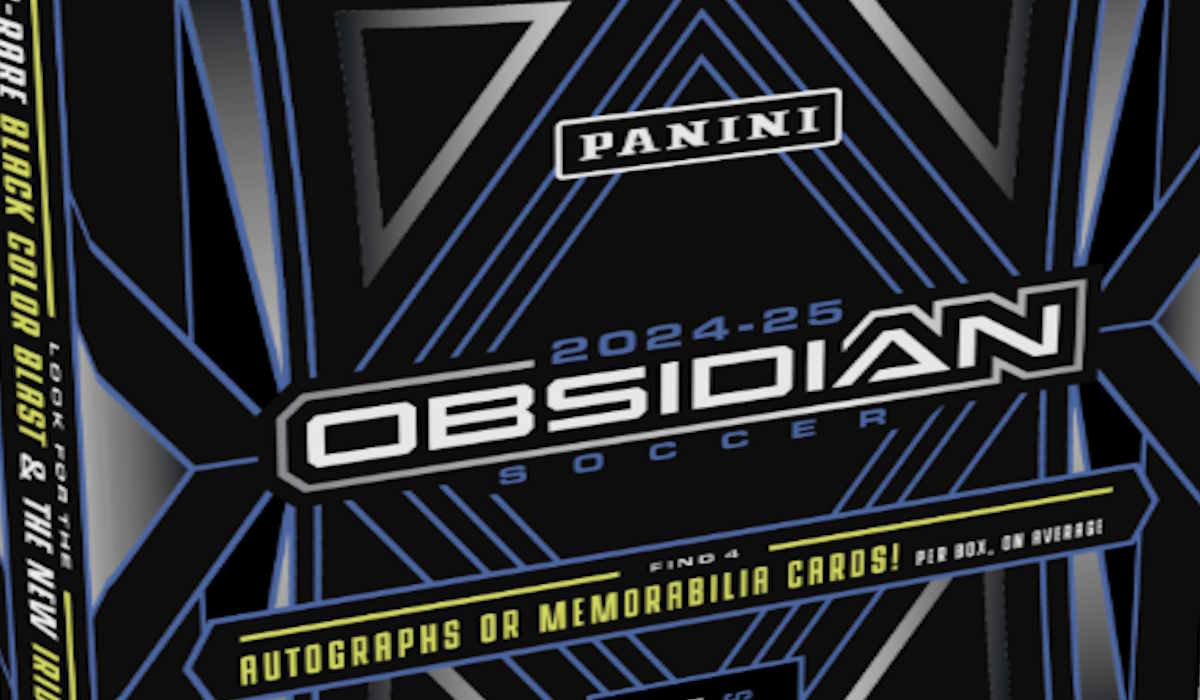

One of the biggest annoyances that plague the card collecting community is sticker autographs. The reaction to the two seems like college-jersey cards versus NFL-jersey cards. So, why is the sticker vs. on-card autograph debate such a big deal?
While some collectors despise sticker autos and some only seem to find them a slight annoyance, you probably won’t be able to find somebody who likes them—at least, in comparison to the on-card alternative.
Shop for on-card autographs on eBay
And if you’re confused, don’t worry. We’ll get into all the differences and details in this post.
Let’s start at the very top.

A sticker auto is exactly what it sounds like: an autograph signed on a sticker and stuck to the card. Panini (or another card company) gives the athlete sheets of stickers, the athlete signs the sheets and returns them, and then Panini later removes the stickers from the sheet and attaches them to the cards.
The effect? You can have a Jordan Love autographed card that Jordan Love never touched. It’s distant and less personal.

On-card autos are nearly the exact opposite: they have the athlete sign them on the card. It’s probably a slightly slower process for the signer.
That said, it’s also a lot more rewarding for the collector. Personally, I have an on-card Luka rookie auto, and I’ve never graded it because of a couple of indentions on the surface of the card.
They look like fingernail imprints—but hey, if they’re Luka’s fingernail imprints, then it’s totally fine by me.
See the difference? There’s a bit more connection.
READ; Sometimes On-Card autographs go unsigned
Sticker autos are useful to companies for a few reasons.
For one, it’s easier to send out sticker sheets than it is to do with cards, especially given how particular collectors are about the condition of the cards as they come out of packs.
As mentioned, stickers are quicker to sign, and most athletes don’t love signing their name ten-thousand times on repeat, so they prefer something more convenient and simple.

Finally, Panini can have the stickers signed before the cards are ever produced and use them at a later date, which minimizes the number of redemptions they have to use.
Sticker autos aren’t ugly. They just aren’t as clean as on-card. Most would say, that when it comes to sticker vs. on-card autographs, on-card ones have more eye appeal.
To be fair, Panini knows the stigma against stickers and does everything in its power to keep the sticker as undetectable as possible. It’s clear and intentionally minimalist so as not to take away from the rest of the card in any way.
Still, many collectors think of the stickers as an eyesore. The other common issue with them is the athlete’s signature going off the sticker, which leaves it looking sad and incomplete.
On the other hand, on-card autos visually pop and seem much more flowing and natural. The athlete has a bit more say of where he/she wants to sign, and this leads to a more organic feel.
If you need further proof of collector’s opinions on attractiveness, search “sticker auto” on eBay and see how many listings advertise a sticker auto. Then, do the same search for “on-card auto.” As you’ll see, only the latter is used as a selling point.
Shop for on-card autographs on eBay
There’s no set rule for determining if the autographs are on-card or sticker, and some brands have a mix of both: including Contenders, Optic, Prizm, Select, and more. The general rule of thumb is that on-card autos are associated with higher-end brands.
If you buy a one-pack, $1,000+ box (think National Treasures), you’ll probably find more on-card autographs. It’s also a bit easier to find on-card autos of legends and Hall of Famers because those people have more time to sign cards.
But even in brands such as Optic, Panini shows an awareness of the value of on-card autos and always includes some on-card autos of the top-talent on low-numbered cards. For a brand like Contenders, many of the top picks are asked to sign on-card.

It’s difficult to compare sticker vs. on-card autograph value on a level playing field. On-card autos are usually limited to more expensive sets or lower print runs, so they demand a higher price as is.
It’s also difficult to compare brands, which is what this comparison makes you do: a Joe Borrow Legacy sticker auto is going to be less than an on-card auto of a more high-end brand.
Shop for on-card autographs on eBay
That said, the price is only amplified by being on-card.
Let’s look at a few examples of different cards with the same rarity from a previous comparsion when this article was first written:
| On-Card Auto | Sticker Auto |
| Ja Morant RC auto /49 = Sold $505 | Ja Morant RC auto /49 = Sold $338 |
| Joe Burrow RC auto /149 = Sold $365 | Joe Burrow RC auto /149 = Sold $260 |
| Tatis 2021 auto /25 = Sold $456 | Tatis 2021 auto /25 = Sold $316 |
| Average: $442 | Average: $305 |
Beauty is always in the eye of the beholder, but these numbers show you’ll be able to more for an on-card auto than a sticker. How much more, though, is hard to say.
My advice? If you have an on-card autograph that’s /25, comp a similar sticker auto of the same player /25, then add 50% and wait for offers—you never want to undersell a big hit!

Some collectors can be snobbish about sticker autos and prefer not to collect them at all. If that’s you, embrace it. Chase the on-card version, the parallels, or whatever suits your interests.
But most collectors find value in any autograph, whether it’s on-card or not, and there’s still a personal connection to be found even through sticker autographs.
As a collector, you’re the only one who can determine your personal tastes. Of course, the market value might influence you, but don’t make that the only reason you collect.
Don’t worry about the ongoing sticker vs. on-card autograph debate. Chase the cards that inspire you, whether their stickers, on-card, or anything else.
 0:58
0:58
The best small town card shop? 👀
Sports Card Scavenger Hunt! (5,000 Subscriber Special!)
I hit a SWEET auto from the #1 overall pick at PCB hobby
The Ultimate 2024 Football Card Brand Tier List (Panini vs. Topps and more!)
2025 Topps All Star Game Mega Box Product Review
Ripping the new Topps All Star Game mega box.
Is this new sports card store the BEST VALUE around?
I Tested eBay Auction Promotions So You Don’t Have To!
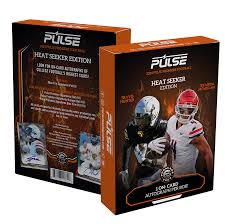
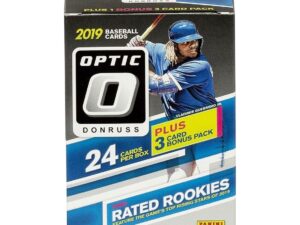
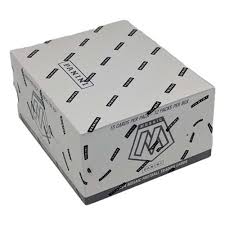

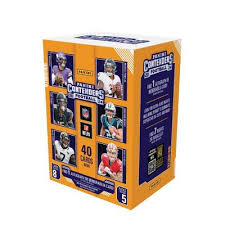
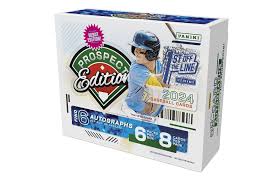
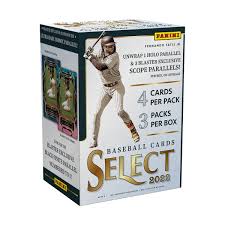
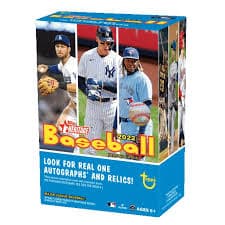
2022 Topps Heritage Baseball Blaster Box Configuration: 7 Packs per Box – 9 Cards per Box. Plus 1 extra pack.
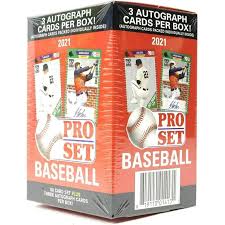
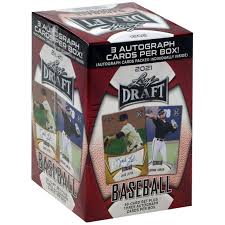
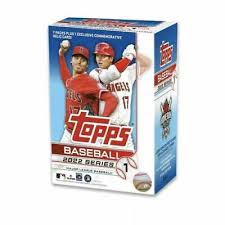
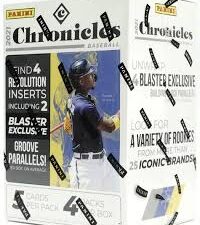
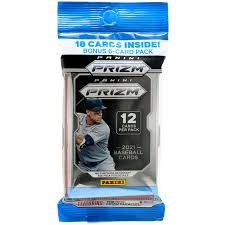
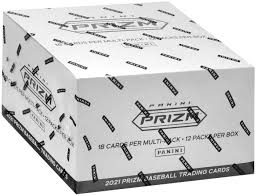

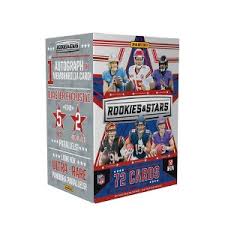
Keep up on breaking Sports Card News, our latest articles, product specials and exclusive content with expert analysis of hobby trends.

© Copyright 2025 - All rights reserved Cardlines.com / Media Techs LLC - Sports Card News, Reviews, Releases and BREAKS - #thehobby.
Important: When you click on links to various merchants on this site and make a purchase, this can result in this site earning a commission. Affiliate programs and affiliations include, but are not limited to, the eBay Partner Network.
Top 5 Sports Card Athletes to invest in RIGHT NOW (big ROI potential!)
Cardlines 7 hours ago